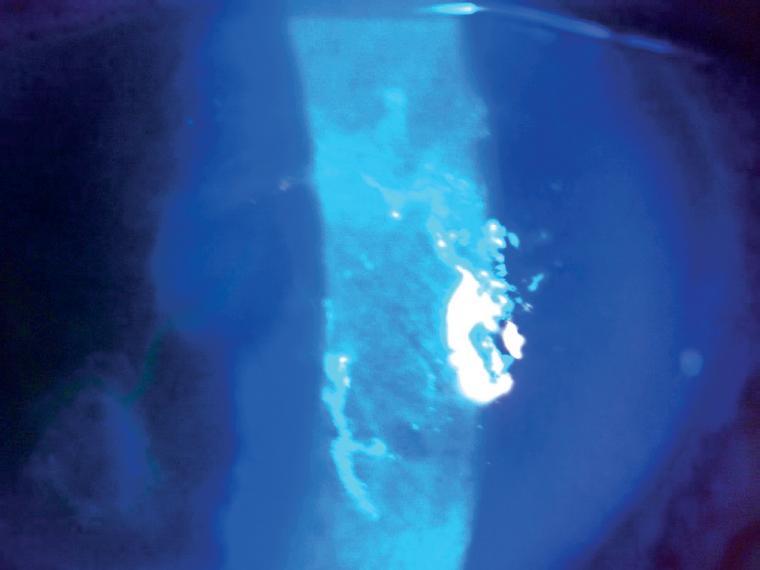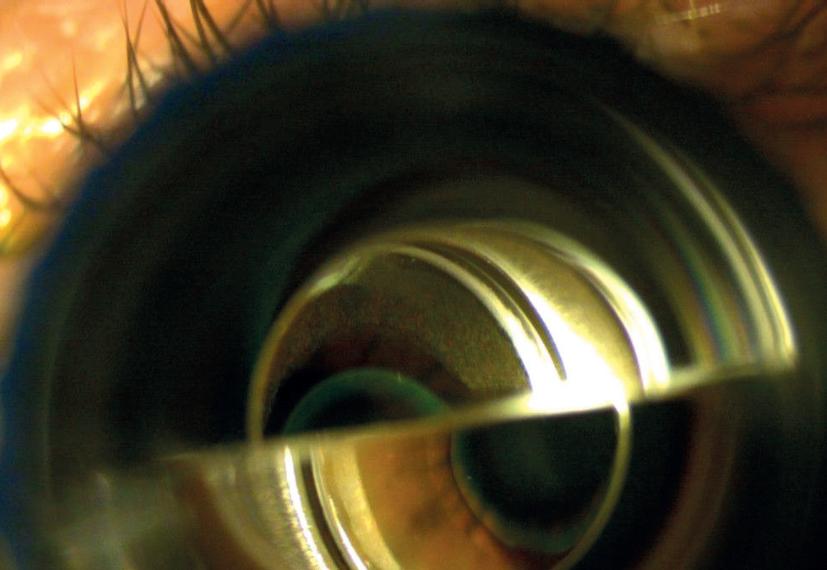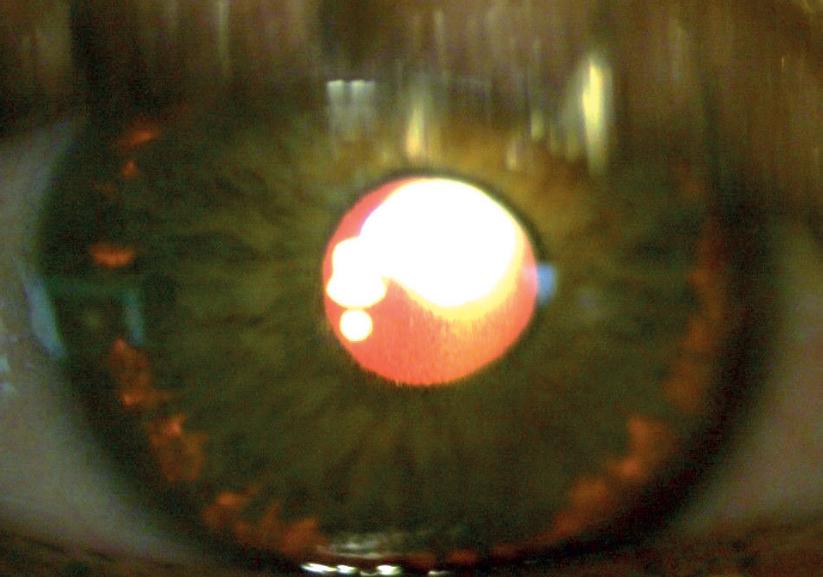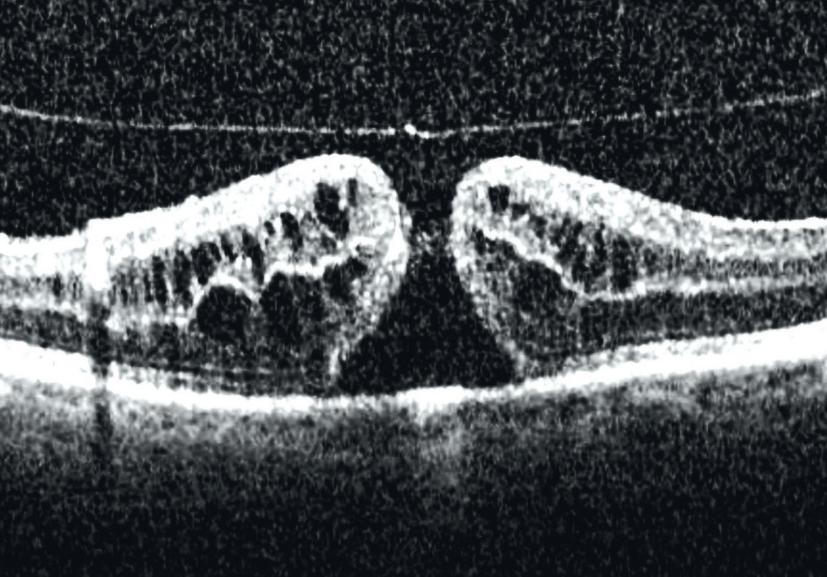
2 minute read
ANOTHER DAY IN THE HOSPITAL EYE CLINIC
from OT April/May 2023
by TheAOP
Dr Deborah Armstrong PhD, MCOptom, DipTp (IP)
IN BRIEF This feature presents a series of clinical cases seen in the hospital eye clinic. Readers are invited to review the images and use additional resources where necessary to answer the questions.
Advertisement
A 32-year-old female patient complains of left eye discomfort, photophobia, redness and reduced visual acuity. She admits fatigue as she has two young children. She has no previous ocular history a) Herpes simplex virus b) Herpes zoster ophthalmicus c) Keratoconjunctivitis sicca d) Acanthamoeba keratitis a) To rule our viral retinitis b) To help to reduce the intraocular pressure c) To check for Shafer’s sign d) To reduce patient discomfort a) Topical cyclosporin b) Epithelial debridement c) Topical steroid d) Topical antiviral
01 What is the most likely diagnosis?
02 The College of Optometrists’ clinical management guidelines advise the practitioner to perform a dilated fundus examination when they suspect this condition – why?
03 Which of the following is leastlikely to be a treatment option at the hospital eye clinic?
A 73-year-old patient with primary open angle glaucoma is seen for routine review a) Goldmann applanation tonometry b) Perkins applanation tonometry c) Gonioscopy d) Pachymetry a) The instrument is placed too superiorly b) The instrument is placed too inferiorly c) The instrument has not been calibrated accurately d) Too much fluorescein sodium has been instilled a) A thin central corneal thickness will cause the intraocular pressure measurement to be underestimated b) A thick central corneal thickness will cause the intraocular pressure measurement to be underestimated c) If the patient holds their breath during measurement, the readings will be underestimated d) Corneal abnormalities do not significantly affect the results
04 Which slit lamp mounted investigation is shown in the image?
05 The reading that is being taken will be inaccurate – why?
06 Which of the following statements about the readings obtained with this instrument is true?

A 45-year-old male patient is referred to the hospital glaucoma clinic by their optometrist who noted raised intraocular pressure with a visual field defect a) Pigmentary glaucoma b) Iris hyperplasia c) Pigment dispersion syndrome d) Posner-Schlossman syndrome a) Amyloid-like material in the trabecular meshwork b) Kruckenberg spindle c) Iris transillumination defects d) Hyperpigmentation of the trabecular meshwork a) The patient may describe episodes of blurred vision associated with exercise b) Patients often report pain when performing near vision tasks c) Axenfeld-Rieger syndrome is a risk factor d) It is more common in people of Afro-Caribbean descent

07 What is the most likely diagnosis?
08 This condition is defined by a triad of clinical signs. Which of the following is not one of them?
09 Which of the following statements about this condition is true?
A 64-year-old female patient presents with a gradual reduction of visual acuity in the left eye over a period of one week. The previous VA was 6/5 and is now 6/36 a) Full thickness macular hole b) Adult vitelliform dystrophy c) Central serous chorioretinopathy d) Bull’s eye maculopathy a) Stargardt disease b) Prolonged cystoid macular oedema c) Trauma d) High myopia a) Ishihara b) Amsler c) Watzke-Allen test d) Visual acuity

10 What is the diagnosis?
11 Which of the following is not a risk factor for this condition?
12 Which of the following tests would be leastuseful when investigating this condition?
Dr Deborah Armstrong graduated from Aston University. She worked as an optometrist in primary care and the hospital eye service before completing the IOVS glaucoma course at the University of Manchester and a PhD at the University of Bradford. Armstrong works as a specialist optometrist in glaucoma for East Lancashire Teaching Hospitals NHS Trust, teaches at the University of Bradford, and is an examiner for the Royal College of Ophthalmologists.











